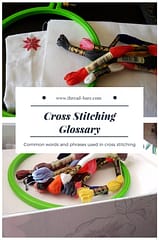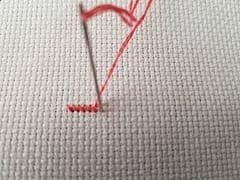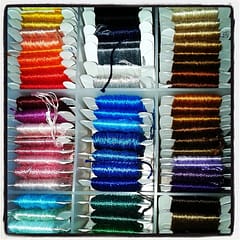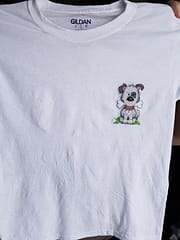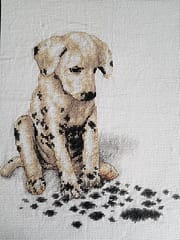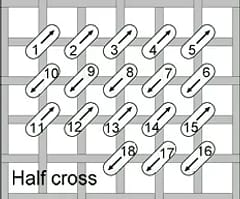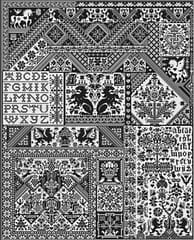Glossary of Common Cross-Stitching Terms and Descriptions
Common words and phrases used in cross stitching
Contents
Introduction
If you hang out on any cross stitch forums or groups there are a number of terms and abbreviations you may come across, some of which can be quite confusing at first. Here is a list of explanations and definitions ….
Confetti Stitches
A term for the single stitches of a single colour scattered throughout a project - these may seem unnecessary but make a huge difference to the depth and detail of a finished project. Don’t skimp on the confetti!
Cross Country Stitching
Working where the stitches take you rather than completing 10 x 10 sections. Gradually completing sections.
Example of Cross Country Stitching Method

Extreme Cross Country Stitching
Working the cross country method but completing a single colour over the whole of the project rather than just a section before moving to the next colour.
Timelapse video of someone using the extreme cross country method
Frogging
Pulling out stitches when you have made a mistake, I believe the term comes from the sound a frog makes rip it, rip it etc - a strange one that I had never heard until recently when I started hanging out on stitching groups !
Gridding
Marking out 10 x 10 or 20 x 20 grid lines as a guide to help with your cross-stitching. You can buy pre-gridded fabric with these lines on already which you then wash at the end and the lines come out. You can also use fabric pens to mark out the grids yourself or you can stitch the grid with a contrasting type of thread.
Example of Pre-Gridded Fabric, 25 Count Magic Guide
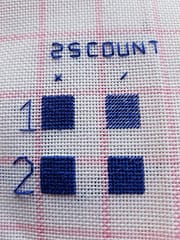
Magic Guide fabric is marked in 10 x 10 squares for 14 to 18 count fabric and 20 x 20 squares for 25 count and above it is produced by DMC and is 100% cotton. Easy Count fabric is marked in a 10 x 10 grid for all fabric counts it is produced by Zweigart and is a blended fabric.
HAED
Heaven and Earth Designs - a company that sells highly detailed charts converted from licenced artwork
Loop Start
A method where you do not anchor the thread tail under your stitches at the back when starting but rather hook them with a loop. This method can only be used if you are stitching with an even number of threads. You take one strand of floss that is double the length you normally begin stitching with, fold it in half and thread the two ends through your needle so you have a loop at the end of your floss. Start your stitching from the back, leaving the looped end at the back as you return your needle from the front pass the needle through the loop and pull it tight - this anchors your thread. This technique is a bit neater on the backside of your work. Instructions on how to do a loop start here : Loop Start
Orts
Old Raggedy Threads - the waste pieces of thread you are left with when you end a thread. I just throw these out but some people keep them and make colorful Christmas ornaments from them
Parking
A technique where you work in 10 x 10 columns or rows and rather than end your thread you leave your unfinished floss strands “parked” or hanging at the front in the next section that they will be used in, I will be doing a future tutorial on how to do this.
Railroading
A technique where you place your needle between the two strands of floss before pulling it down through the fabric, this helps the stitches to lie flatter and looks neater. A future tutorial will be coming on this method.
SAL
Stitch-along - where a group of people all stitch the same design and share their progress with the group to encourage each other
Tent Stitching
Working a design in half stitches rather than full cross. There are a number of methods to this, regular half-stitch, continental stitch and basket-weave stitch. I will be adding a tutorial on the different methods and pros and cons for using each
UFO
Unfinished Object - Obviously I have none of these LOL
WIP
Work in Progress
Never miss an article… Like us and follow us on Facebook ThreadBareStitching and Pinterest
